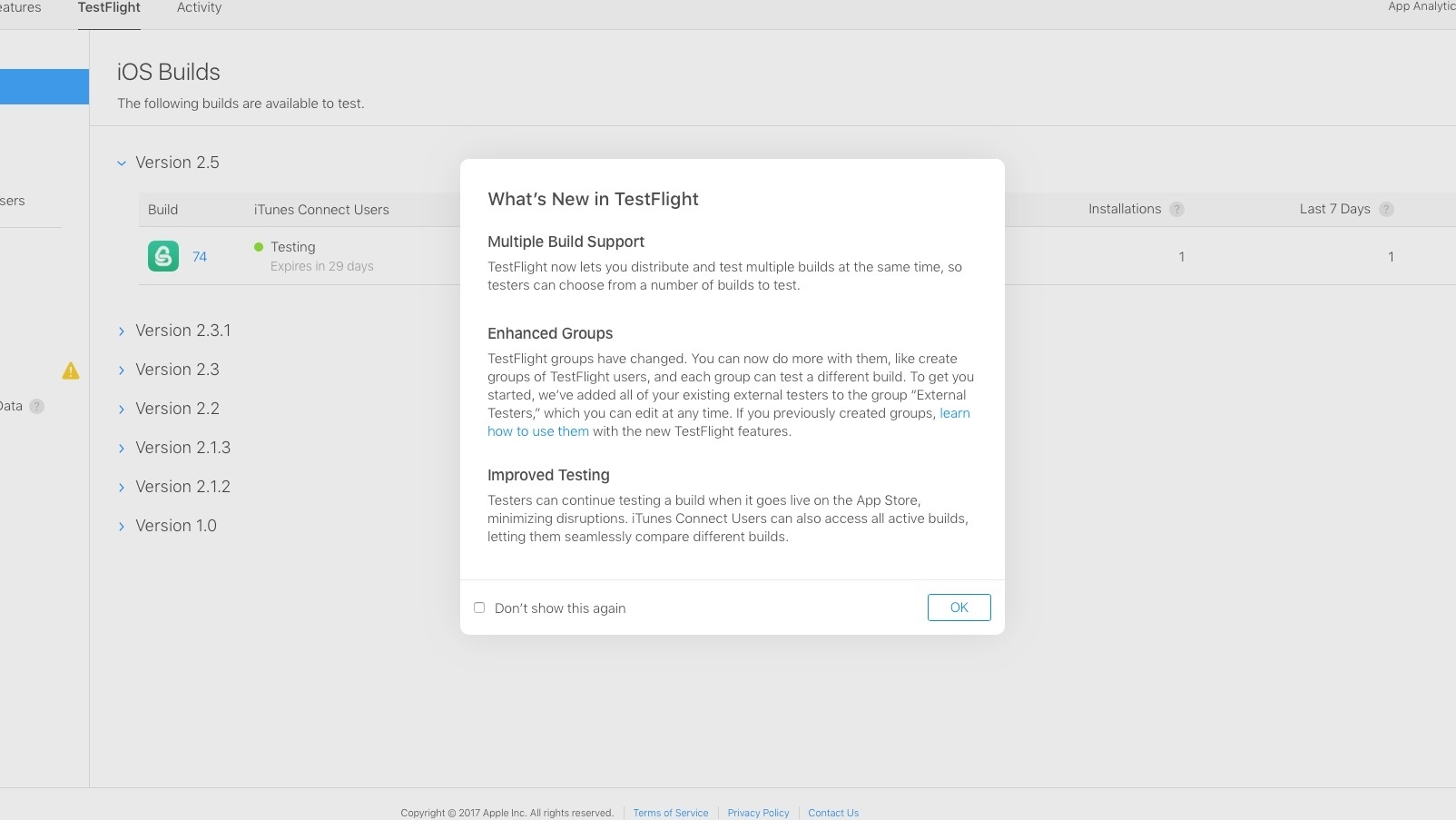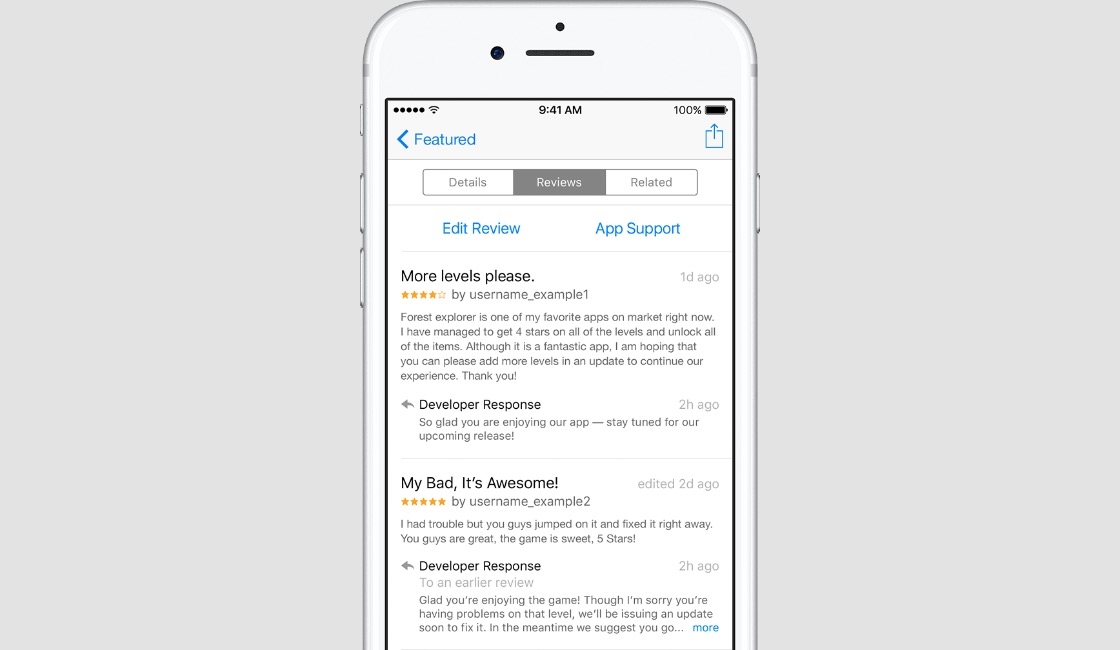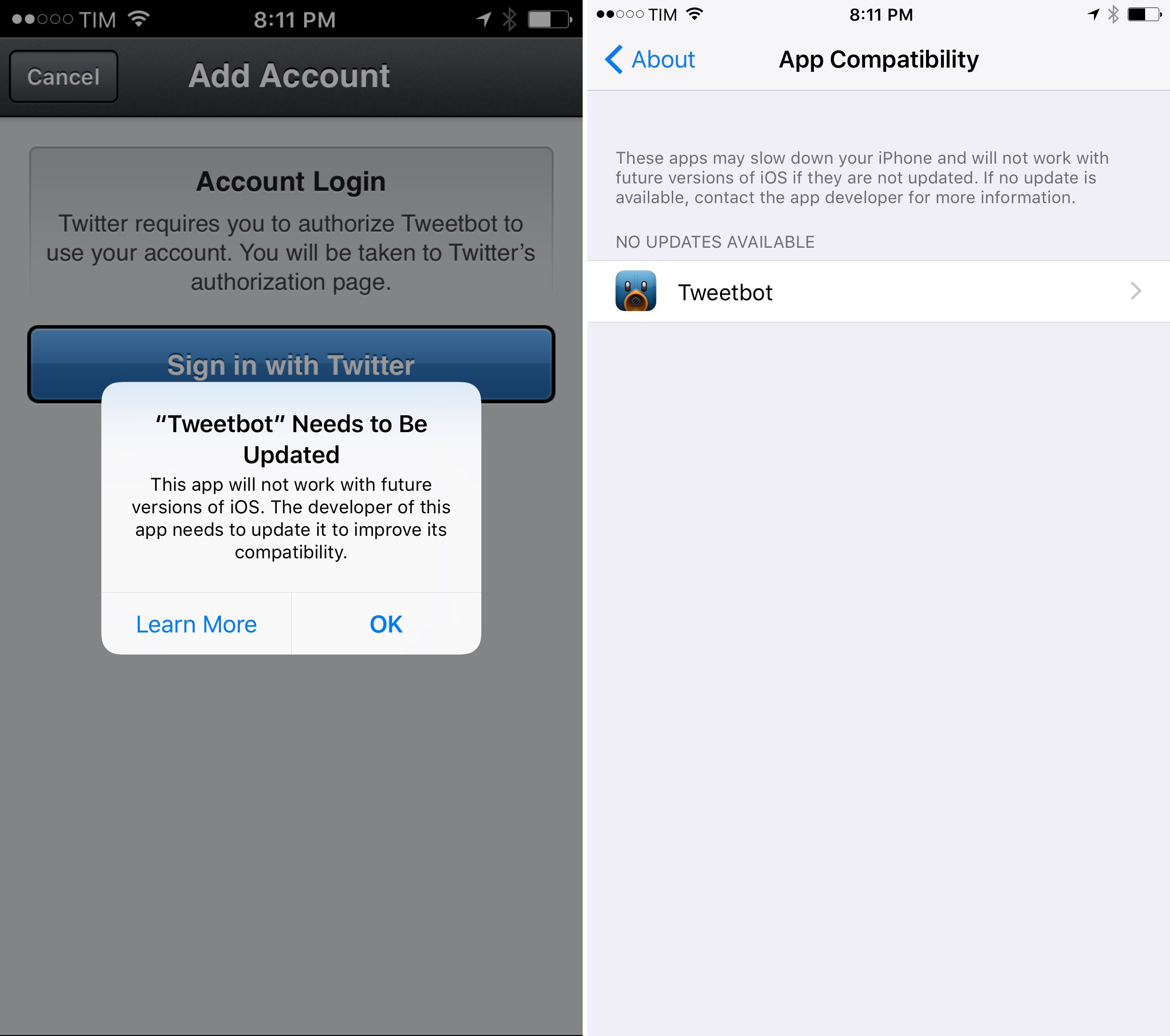Yesterday Apple launched TestFlight 1.5 on the App Store. The update’s release notes didn’t highlight any specific changes, but developers are discovering today that its release was timed with a few major updates.
Developers can now create different builds of an app to be distributed to different groups of testers. These changes will make A/B testing of apps possible for the first time, so developers can gauge feedback from different groups who are testing different versions of the same app.
Multiple builds can also be distributed to the same people so that testers can choose from a variety of builds that they wish to test.
https://twitter.com/stroughtonsmith/status/851837283900825600
Longer testing periods is another change – up from 60 days to 90 days. These are not yet noted in Apple’s official documentation, so they are likely still in the process of rolling out. Developers we’ve spoken with as well as the MacStories team have been able to see builds with an expiration time of 90 days.




